The Different Types Of Rope
Rope is one of the most important pieces of marine equipment out there, and while there’s no shortage of literature about hull types, the best anchors you can buy, SOS distress signals, there’s not enough written about rope, rope types, and the different properties, uses, and marine applications of this useful tool.
In this article, we’re going to take a look as synthetic ropes and natural fiber rope types, learning about their pros and cons, their different uses, and understanding which ones will work best in challenging marine environments.
Not all ropes were created equal! Here’s all you need to know.
What are the different types of rope?
There are many materials used today to make rope; synthetic fiber, natural fiber, and wire. The most popular is nylon, a tough and durable synthetic. It is strong, holds up well to the weather and stress, and coils without kinking. The line is also made from natural fibers like cotton and hemp (manila rope), and other synthetic fibers such as Dacron, Kevlar, and polypropylene.
No matter what material your rope is made from, they’ll all have similar construction. A rope is a group of fibers that have been braided or twisted together to create a larger, stronger cord.
A braided rope is made from a number of strands that have been woven together to create a strong line. They come in different varieties with differing numbers of strands used. Some have a twisted braid construction in the core, while others do not. Since they’re so strong, they’re particularly good for climbing rope and often used for outdoor pursuits and a wide range of different purposes.
A variety of braided lines are available:
- Braid on Braid has a braided core inside a braided sheath – will stretch less, and has less flexibility, than a hollow braid.
- Multibraid is braided with 2 pairs of Z-laid and two pairs of S-laid strands – these braided ropes are flexible and won’t kink.
- Parallel Core has a braided sheath over a core of straight or lightly twisted yarns – it is very strong.
- Hollow Braid has no core – it is very flexible but can flatten during use. It is only found in small-sized rope.
Twisted rope is one of the more popular rope choices. This type of rope is usually made from three strands that are twisted into a strong and tight cord. Traditionally, a twisted rope is made from gathered fibers that are spun into durable yarns. The yarns are then twisted into strands, which are then laid into rope. Compared with braided rope, twisted versions usually have a greater rope thickness.
There are other variations of rope type out there, such as solid braid rope, Kernmantle rope, plaited rope, endless winding rope, and some braided ropes that use a combination of the two mentioned above (a twisted braid construction). Now let’s look at the different rope materials out there.
Types Of Rope: Synthetic
Polypropylene Rope
Polypropylene line is the least expensive of the synthetic lines, however, it deteriorates quickly from ultra-violet rays and wear. It is not a good line for dock line because its hard surface tends to slip from cleats and can cause cuts if it runs free through your hands. It also has poor abrasion resistance. It floats, so it is good for rescue lines. It is also appropriate for ski lines, dinghy painters, short mooring pendants, or other applications where you want to be able to see the line on top of the water. Polypropylene rope shouldn’t be used as dock, anchor, or towing lines.
Nylon Rope
Nylon rope has a lot of stretch (up to 40%) and is very strong for its size, allowing it to absorb shock loads well. However, when it is wet it can lose up to 25% of its strength. It wears well, resists mildew and rot, and does not float. Nylon three-strand rope braided together is the preferred line for dock lines since it stretches sufficiently to dampen the shock of wave action and wind against your cleats. Just make sure it does not stretch too much for the situation in which you use it.
Polyester Rope
Polyester rope wears better than polypropylene, is almost as strong as Nylon, and retains its strength when wet. It does not stretch as much as Nylon and does not float. It’s the most abrasion-resistant of the synthetic rope types, and high abrasion resistance is very important if you want a long-lasting rope. For that reason, Polyester (such as Dacron) is used for sailboat running rigging, anchor rode, towing lines, and other applications where you don’t want line stretch to interfere. It will, however, chafe easily so check it often and protect it as necessary.
About Synthetic Rope
When cutting synthetic rope, prevent the ends from fraying with a temporary binding or whipping. Synthetic rope ends can be sealed by melting, either with a special heat tool for the purpose of cutting and sealing (as shown in photo), or by melting over a flame to fuse the fibers. Adhesive tape wound around the ends can be a temporary binding. Small line ends can be dipped into acetate glue or a commercial “liquid whipping” material. Plastic heat-shrink tubing is also available.
Synthetic lines are lighter and stronger and more rot-resistant, generally, than natural fiber ropes. Synthetic lines are slipperier than natural fiber ropes so be sure to check your knots to make sure they are secure. Synthetic lines should be cleaned with fresh water and detergent, kept out of sunlight, inspected frequently for chafe, and stored dry.
Types Of Rope: Natural
In all honesty, modern boaters shouldn’t use natural fiber for ropes. Synthetic ropes are so much more efficient. It used to be that penny-pinching sailors would use natural fiber ropes to save money, but these days real natural fiber rope is hard to come by, and it’s generally more expensive because of that very reason. However, it does still turn up on deck, but usually in the form of a rustic decoration. Why has natural fiber rope gone out of fashion? Here’s why.
Natural materials such as manila, sisal, hemp, and cotton will shrink when they get wet and also tend to rot or become brittle. Manila is still used today on large ships and is the best natural fiber for mooring lines, anchor lines, and as running rigging. Manila rope has a minimum of stretch and is very strong. However, it’s only about half as strong as a comparable-sized modern synthetic line.
A natural fiber line should be uncoiled from the inside of a new coil in order to prevent kinks. Always whip or tape the ends of natural fibers to keep them from unraveling. When natural fiber lines have been in salt water you should rinse them in fresh water and allow them to dry thoroughly. They should then be properly coiled and stored on grates above deck in a dry, well-ventilated place to help prevent mildew and rot.
What are the safe working loads for different ropes?
Knowing the maximum safe working load for a line can help prevent accidents and tragedies. You should never stress a line anywhere near its breaking strength. As a line is spliced, stretched, wears, is subjected to sustained loads, shock loads, loads of many times the recommended working load, subjected to great heat or ultraviolet light for long periods of time, it will continually lose some of its strength. Every time a knot is tied in the rope, it will lose some of its strength–and that includes all practical marine knots. Each line should be inspected prior to using it in extreme load conditions and if chafe, excess dirt, cut or worn strands, stiffness or hardness are found the line should not be used.
Important: Do not allow anyone to stand in line with, or within 45 degrees on either side, of a line under tension. Should the line part, the recoil force may cause serious injury.
Safe working load is generally thought of as no more than 1/5th of a line’s breaking strength. Said another way, the breaking strength should be five times the weight of the object the line is going to hold. You are not expected to memorize the tables below but you should remember this 5 to 1 safety rule. You should always choose a line with its intended safe working load in mind. The American Boat and Yacht Council has published charts of safe working loads for various types of line and are outlined below.
American Boat and Yacht Council Safe Working Load (in pounds)
3 strand twisted line and single braid line
|
Diameter |
Circumference |
Manila |
Nylon |
Dacron |
Polypropylene |
|
1/4 |
3/4 |
120 |
182 |
182 |
213 |
|
5/16 |
1 |
160 |
281 |
281 |
232 |
|
3/8 |
1 1/8 |
216 |
407 |
407 |
459 |
|
1/2 |
1 1/2 |
424 |
704 |
704 |
714 |
|
5/8 |
2 |
704 |
1144 |
1100 |
1054 |
|
3/4 |
2 1/4 |
864 |
1562 |
1375 |
1445 |
|
7/8 |
2 3/4 |
1232 |
2200 |
1980 |
1955 |
|
1 |
3 |
1440 |
2750 |
2420 |
2380 |
American Boat and Yacht Council Safe Working Load (in pounds)
Double braided line
|
Diameter |
Circumference |
Nylon |
Dacron |
|
1/4 |
3/4 |
420 |
350 |
|
5/16 |
1 |
680 |
560 |
|
3/8 |
1 1/8 |
960 |
750 |
|
1/2 |
1 1/2 |
1630 |
1400 |
|
5/8 |
2 |
2800 |
2400 |
|
3/4 |
2 1/4 |
3600 |
3000 |
|
7/8 |
2 3/4 |
5300 |
4800 |
|
1 |
3 |
6260 |
5600 |
In Summary: What Is The Best Type Of Rope For Boating?
As attractive as old school twisted rope made from natural materials might be, there’s no replacement for modern, synthetic rope when it comes to marine applications. We recommend that you keep a variety of different rope kinds in stock but if we had to choose one above the rest, we would always recommend a good Nylon rope. A strong braided Nylon is easy to splice, affordable, and very strong. It’s useful for mooring, docking, and a number of other purposes.
Categories: Nautical Knots
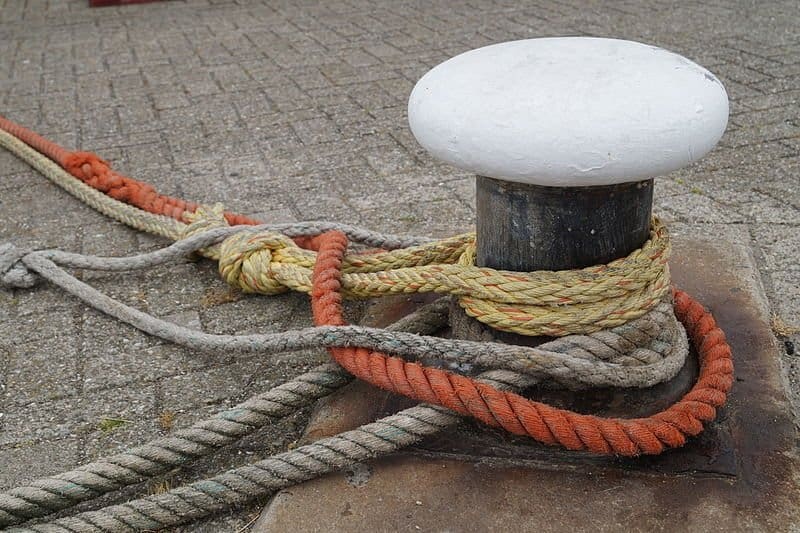
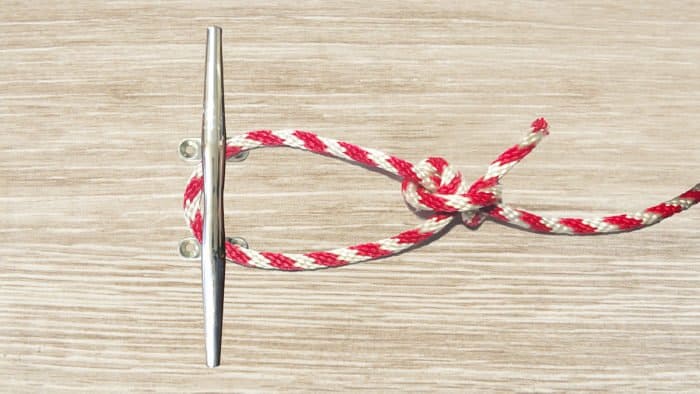
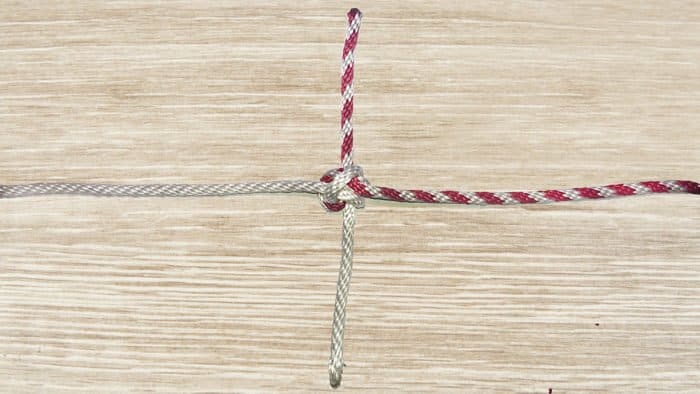
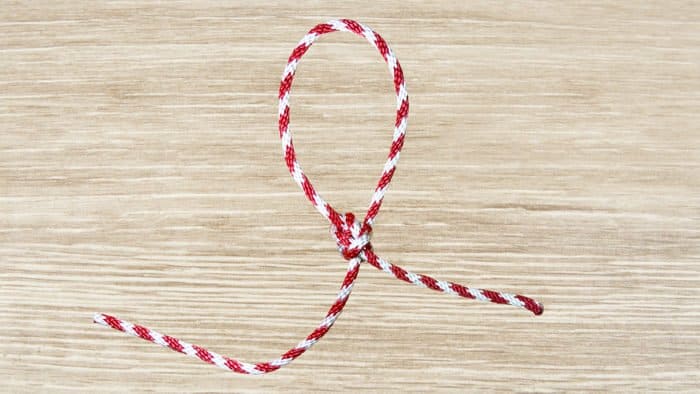
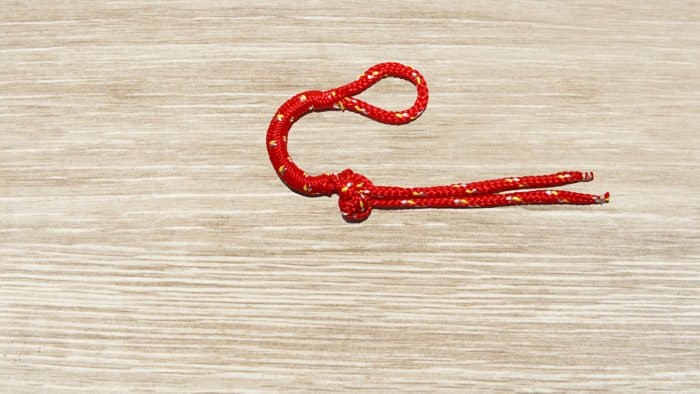








2 Comments
Celeste Ireland on August 24, 2021
I’d like to make my own buoyant heaving line (required by Transport Canada on kayaks for rescue situations). I see that polypropylene is the only rope you mention above that floats. Do you have a recommendation on the right rope for this purpose? Can you use any polypropylene rope? Would you recommend a hollow braid poly rope, or a diamond braid with a core? Or something else?
Robert Hogward on January 17, 2022
The essential features of the best dock lines are strength for securing my boat and flexibility to make tight knots. Thus, my boat won’t go astray. I can also expect resistance against harsh outdoor elements, weathering, and loads from these excellent dock lines.